1)Kufri Alankar: It is recommended for cultivation of Punjab, Haryana and Uttar Pradesh. Plants are tall with thick stem. It matures in 75 days in plains and 140 days in hills. Tubers are of oblong shape. It gives yield of 120 qtl/acre.
2)Kufri Ashoka: Plant is of medium height with medium thick stem. It gets mature in 70-80 days. Tubers are of large oval shape, white color with smooth skin. It is susceptible to late blight.
3)Kufri Badshah: Plants are tall with 4-5 stems per plant. Tubers are of large to medium, oval shape with dull white flesh. Tubers are tasty with good flavour. It matures in 90-100 days. It is tolerant to frost, resistant to late blight, early blight. It gives yield of 130 qtl/acre.
4)Kufri Bahar: Plants are tall with thick stem, 4-5 stem per plant. Tubers are of large, white, round to oval shape and flesh is of white color. It mature in 90-100 days and gives yield of 100-120 qtl/acre. Its keeping quality is average. It is resistant to late blight, early blight and leaf roll etc.
5)Kufri Chamatkar: Plants are medium and spreading with dark green foliage and more stems. It matures in 110-120 days in plains whereas 150 days in hills. Tubers are of round shape with yellow flesh. It gives yield of 100 qtl/acre in plains and 30 qtl/acre in hills. It is resistant to late blight, brown rot, charcoal rot and wilt.
6)Kufri Chipsona 2: Plants are of medium tall with few stems. Foliage is of dark green and flowers are of white color. Tubers are of white, medium size, round, oval shape with smooth skin. Gives average yield of 140 qtl/acre. It is resistant to late blight. It is highly suitable for making chips and french fries.
7)Kufri Chandramukhi: Plants are medium tall. Tubers are of oval, white with dull white flesh. It keeping quality is good. It matures in 80-90 days in Plains and 120 days in hill areas. Gives average yield of 100 qtl/acre in plains and 30 qtl/acre in hills. It is susceptible to late blight, brown rot, charcoal rot and wilt.
8)Kufri Jawahar: Plants are short, erect and compact with few stems, stem is thick. Foliage is of light green color. Tubers are of medium sized, round-oval shape with smooth skin. It is early maturing variety and ready to harvest in 80-90 days. It gives yield of 160 qtl/acre. It is not suitable for processing. It is resistant to late blight.
9)Kufri Pukhraj: Plant are tall with medium thick stems, stem are few. Tubers are of white, large and oval shape with smooth skin. It matures in 70-90 days and gives average yield of 160 qtl/acre. It is resistant to early blight and not suitable for processing.
10)Kufri Sutlej: Plants are medium compact and thick stem. Foliage is of grey green color. Tubers are large size with oval shape and smooth skin. It matures in 90-100 days with average yield is 160 qtl/acre. It has good consumer quality, it easy for cooking with mild flavour. It is not suitable for processing.
11)Kufri Sindhuri: Plants are tall with thick stems. Tubers are round, light red in appearance. Its flesh is of dull white color. Its keeping quality is good. It gets mature in 120 days in plains and 145 days in hills. It gives yield of 120 qtl/acre in plain areas. It is resistant to frost, late blight, charcoal rot and wilts.
12)Kufri Surya: The variety is resistant to summer season and is resistant to wilt disease. The variety matures in 90-100 days and it gives an average yield of 100-125qtl/acre.
Other states variety
Kufri Giriraj, Kufri Himalini, Kufri Himsona, Kufri Giridhari, kufri Jyoti, Kufri Shailja.
Kufri Garima, Kufri Gaurav, Kufri Sadabahar, Kufri Surya, Kufri Khyati
Kufri Alankar: It is recommended for cultivation of Punjab, Haryana and Uttar Pradesh. Plants are tall with thick stem. It matures in 75 days in plains and 140 days in hills. Tubers are of oblong shape. It gives yield of 120 qtl/acre.
Soil –
Climate-
Time of sowing
Accurate planting time is necessary for obtaining good yield.
Seed rate-
Seed Treatment-
Method of sowing
For sowing, use tractor operated semi-automatic or automatic planter.
Fertilizer Requirement(kg/acre)
| UREA | SSP | MURIATE OF POTASH |
| 165 | 155 | 40 |
Nutrient Requirement (kg/acre)
| NITROGEN | PHOSPHORUS | POTASH |
| 75 | 25 | 25 |
Earthing up:
WSF: To promote bulking in Potato, Spray 13:0:45@ 2 kg and 100gm Magnesium EDTA per acre. Add fungicide Propineb@3 gm/ltr of water as prophylactic. To increase number of tubers and size, spray with Humic acid (12%) @ 3 ml+ MAP 12:61:00 @ 8 gm/DAP @ 15 gm/ltr of water in vegetative stage.
1.Nitrogen
|
| Deficiency Symptoms |
Apical growing points stop developing leaves thick brittle and irregular chlorosis. |
| Correction Measure |
Foliar spray of Borax 0.5 % at fortnightly intervals |
2.Potassium
|
| Deficiency Symptoms |
Apical growing points stop developing leaves thick brittle and irregular chlorosis. |
| Correction Measure |
Foliar spray of Borax 0.5 % at fortnightly intervals |
3.Calcium
|
| Deficiency Symptoms |
Apical growing points stop developing leaves thick brittle and irregular chlorosis. |
| Correction Measure |
Foliar spray of Borax 0.5 % at fortnightly intervals |
4.Magnesium
|
| Deficiency Symptoms |
Apical growing points stop developing leaves thick brittle and irregular chlorosis. |
| Correction Measure |
Foliar spray of Borax 0.5 % at fortnightly intervals |
5.Sulphur
|
| Deficiency Symptoms |
Apical growing points stop developing leaves thick brittle and irregular chlorosis. |
| Correction Measure |
Foliar spray of Borax 0.5 % at fortnightly intervals |
6.Boron
|
| Deficiency Symptoms |
Apical growing points stop developing leaves thick brittle and irregular chlorosis. |
| Correction Measure |
Foliar spray of Borax 0.5 % at fortnightly intervals |
7.Iron
|
| Deficiency Symptoms |
Apical growing points stop developing leaves thick brittle and irregular chlorosis. |
| Correction Measure |
Foliar spray of Borax 0.5 % at fortnightly intervals |
1)Early blight:
![]()
Symptoms-
Management-
2) Black scurf:
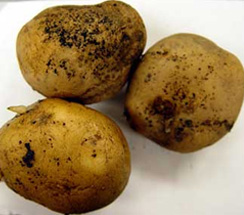
Symptoms-
Management-
3)Late Blight:
![]()
Symptoms-
Management-
4)Common scab:
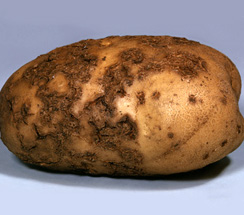
Symptoms-
Management-
5)Bacterial soft rot:
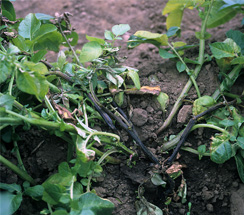
Symptoms-
Management-
6)Mosaic:
Symptoms-
Management-
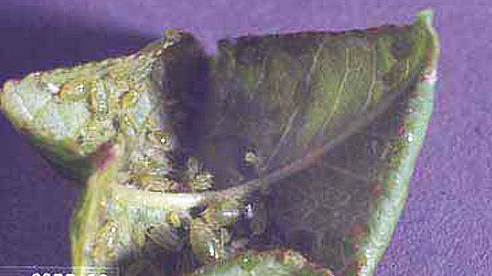
Symptoms-
Management-
2) Cut worms: (Agrotis spp, Euxoa spp)
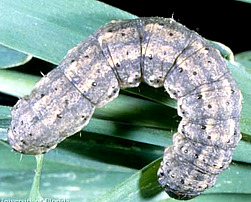
Symptoms-
Management-
3) Epilanchna Beetle:
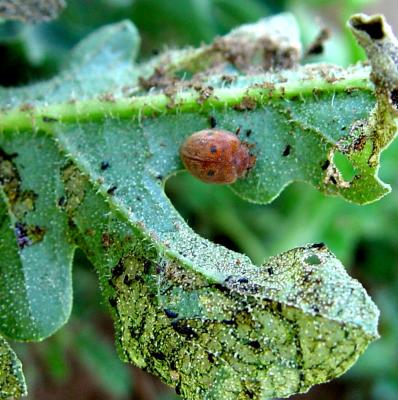
4) White Grub:
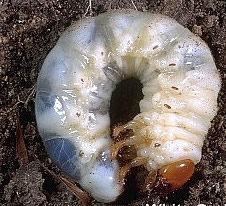
Symptoms-
Management-
5) Potato Tuber Moth: Phthorimaea operculella

Symptoms-
Management-
Root Knot Nematodes (Meloidogne incognita and M. javanica)
Management-
15 – 20 t/ha in a duration of 120 days.
